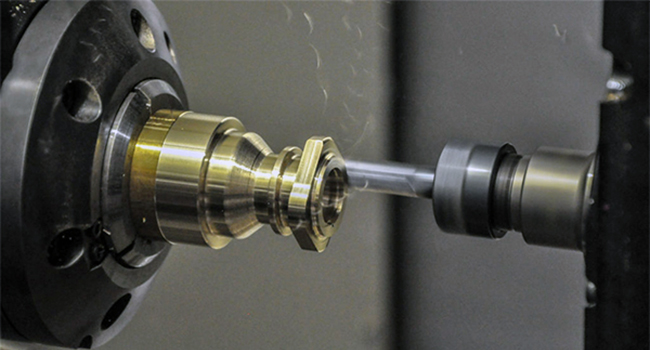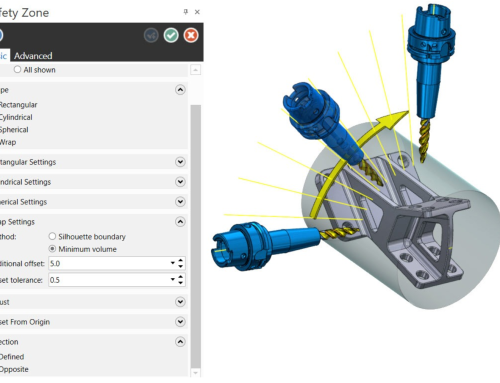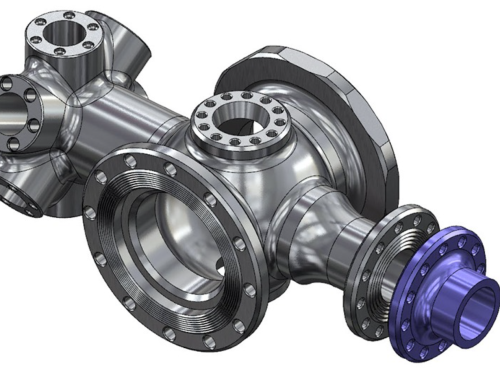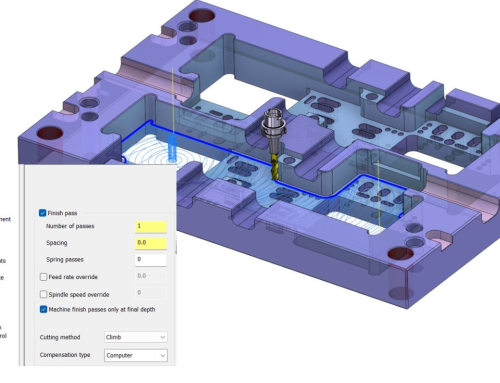
Mastercam Lathe generates the best G-code possible to direct a CNC turning machine. It takes a 3D CAD model of a part, applies toolpaths to it to create a machining plan, and then outputs that information to the CNC lathe.
The Mastercam Lathe product does this and more. Its optimized, stock-aware toolpaths can be applied to a program with minimal time and mouse miles. It also offers a customizable tool library where programmers can digitally store their tool specs and comments. Lathe’s in-software verification system eliminates the need for third-party simulation. Add-ons like the Multiaxis product can enhance Lathe’s abilities, but its essential features are more than enough for the vast majority of turned parts.
CAD for CAM
Programmers don’t need to start in another software to create or edit the 3D model of their part. Mastercam’s CAD for CAM tools mean that all design can take place in the same interface as the CAM programming. These CAD tools control wireframe, surface, solid, and STL design. With Direct Modeling, users can move, delete, and add geometries all with their mouse as they watch onscreen. And once they’ve finished, exporting to the CAM function is quick and seamless.
Making Projects Repeatable and Reusable
Tuning projects programmed with Mastercam Lathe become part of a larger library for shops to use in the future. If an existing project is modified, a few simple clicks and Mastercam’s associative cutter paths will update to the changes with no need to start over. Similarly, a shop can save their preferred cutter motion and Lathe tooling choices to be applied to future jobs
Using Turning Tools to their Fullest
Certain turning inserts offer specific benefits if the CAM software uses them to their full potential. Button inserts and newly emerging bi-directional shaped inserts, for example, deliver the most benefit when they cut in both directions.
Mastercam’s Dynamic toolpaths are the key to safe, rapid machining in cases like these. The software uses advanced algorithms to adjust the cutting tool in order to remove the optimal amount of stock at all times. Because the cutting is adjusting dynamically, previously impossible cutting speeds are now possible. Dynamic toolpaths save money on three fronts: longer tool life, reduced material waste, and faster cycle times.
C-axis Programming Tools
While traditional turning depends on material rotating on an axis while a cutter runs along that axis, C-axis programming uses the spindle as another axis of motion. This enables a far greater range of cutting angles. It essentially gives users some of the abilities of a vertical milling center, allowing off-axis cutting. Lathe’s C-axis programming tools give users the ability to program maneuvers like drilling and contouring in addition to basic turning.
Expanding Beyond Basic Turning
This is just the beginning of what can be done with turning. Swiss-style machining is similar to standard tuning except that the stock itself can slide in and out rather than being simply held at one or both ends. And Mill-Turn machining combines the workpiece rotation of turning with additional table and tool rotation of milling. The basics of lathe programming still apply.







Leave A Comment